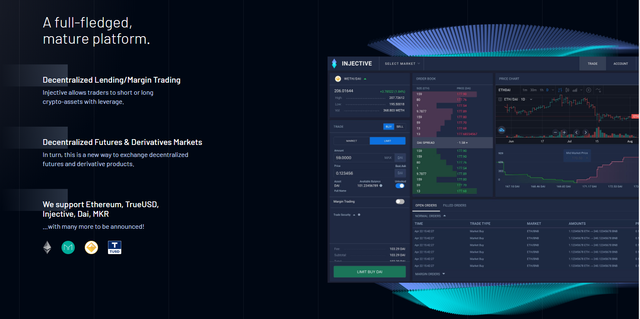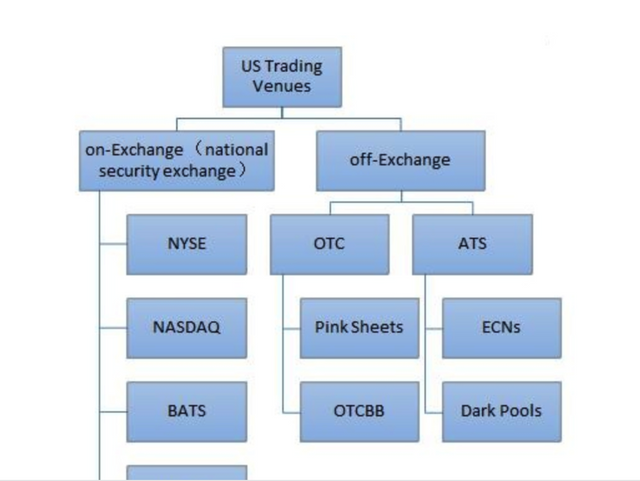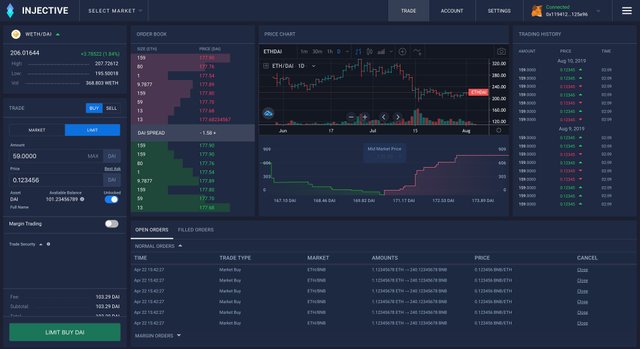
The injective chain is predicated on the Cosmos zone and could be a decentralized protocol built on Layer-2, providing a high-speed Ethereum decentralized trading experience. it'll use the Cosmos IBC protocol to attain cross-chain transactions, VDF to simulate real-time through Proof of period, and standardize order sequencing to eliminate early tradings. Also, the Injective chain supports token staking and provides technical support for creating more services like staking within the future.
As my knowledge started about 300 years ago during the commercial age, people were working endlessly to extend productivity and efficiency on machines to manufacture from steam engines to automobiles; the keywords were production, automation with machines, and efficiency optimization for maximized profitability.
According to everything has changed, and also the passing of your time seems to be even faster as we witnessed the iteration of technologies. Humans shift their attention removed from basic productions and machines back to humans themselves; the net connects integrates humans, information, and machines.
We know things and other people get connected and integrated into an "unseen network," the characteristics of blockchain decentralization or however you call it, became extremely incentivizing for people to act and innovate upon. Specifically, works are done on all layers of the web from, again, data productions, storage, to applications, and in fact together with all the innovations include innovative business models and even "token economies."

(Status of exchanges)
We can in traditional finance or internet finance, "exchange" play a fundamentally crucial role. The essence of the commodity economy is that the exchange economy, and within the commodity economy, productions and consumptions are matched through market exchanges. When a correct equilibrium is achieved for supply and demand, the marginal substitutional rate between any two commodities are going to be the identical for any consumer, and therefore the exchange of values is optimized.
The platform has evolved from the physical markets to the electronic stock trading systems and exchanges and more. Digitalization and "internalization" are the new focuses. within the past decade, since Satoshi Nakamoto invented Bitcoin, the exchange medium and platform have again shifted from centralization to decentralization.
After the ICO hypes in 2017, the tokenization of assets has grown popular and now towards better maturity. At the identical time, various digital asset trading and exchange platforms also utilize blockchain technology to realize decentralization, hinting a promising future for internet finance and exchange as a function itself.
(progress and current status of traditional exchanges)
An exchange may be a trading platform with diverse products, which provides price discovery and liquidity for traded products. Technological advancements have facilitated and effected also the business model and infrastructure of the exchanges. Not many of us interchange offline market places and shout out the costs of their goods to draw in buyers nowadays, but attempt to get their goods sold through electronic trading systems.
In terms of the business model, most exchanges in Europe and also the u. s. have gone from membership-based to create for-profit companies.
As the hub of economic activities, the event of exchanges is heavily full of regulatory policies. However, as technology develops, regulations loosen, and business competitions keep on, Alternative Trading System has emerged since 1990 within the US adding flexibility and variety to the financial world.
(development of exchanges based on blockchain technology)
Centralized exchanges, because the name suggests, means the assets deposited by the users are stored within the hands of the exchange owners, and matching of trades and even prices of products are subject to centralized controls operated on centralized servers. In other words, we, as users, do everything on the platform supported our trust within the team and institution running it.
In comparison, the essence of decentralized exchanges is to permit users' assets to be under decentralized custody, with every transaction record stored on the blockchain giving transparency and traceability. Simply put, this whole decentralization is supposed to stop malicious human behaviors and to facilitate users to trust in codes and technology rather than other kinsfolk. Let's probe further in details
* (Centralized Exchange)

1. When using a centralized trading platform for the first time, you need to complete the registration required by the centralized exchange and KYC. Upon different levels of task completion, you will have permission to deposit, withdraw, trade, and more.
* (Deposit)
2 deposit a certain amount of assets from other exchanges or your wallet to the newly registered centralized exchange. It should be noted that the address to receive the deposit is assigned to you by the centralized exchange, and thus you do not have the private key to this address.
* (Withdraw)
3 to withdraw assets away from the exchange, you are subject to centralized risk control conducted by the exchange persons as you do not have control of the address. It is usually the case that you will need to complete the highest level of KYC. Further, the release of your assets is completely subjected to the permission and execution of the exchange staff..
* (Future Decentralized Exchange)
4 With the advancement of blockchain technology and the emergence of more public blockchains, there are now a variety of decentralized exchanges. DEXes are different because of the diverse public blockchains they are based on and their respective concepts and technologies. Here we only discuss the decentralized exchanges about the general traits.
5 One of the key aspects of decentralized exchanges is that the exchange accounts equate to smart contract accounts. In brief, storing assets on DEX is to store them in smart contracts which is to store them in codes, and in codes you trust. Usually, most DEXes will only ask for registration, and to deposit, withdraw, and trade.
6 The injective chain is based on the Cosmos zone and is a decentralized protocol built on Layer-2, providing a high-speed Ethereum decentralized trading experience. It will use the Cosmos IBC protocol to achieve cross-chain transactions, VDF to simulate real-time through Proof of Elapsed Time, and standardize order sequencing to eliminate early tradings. Also, the Injective chain supports token staking and provides technical support for creating more services such as staking in the future.
- links to stay up to date with our progress:
- Official Website: https://injectiveprotocol.com
- Whitepaper Link: https://docsend.com/view/zdj4n2d
- Github: https://github.com/InjectiveLabs
- Reddit: https://www.reddit.com/r/injective/
- Twitter: https://www.twitter.com/@InjectiveLabs
- Telegram: https://t.me/joininjective
- Linkedin: https://www.linkedin.com/company/injective-protocol